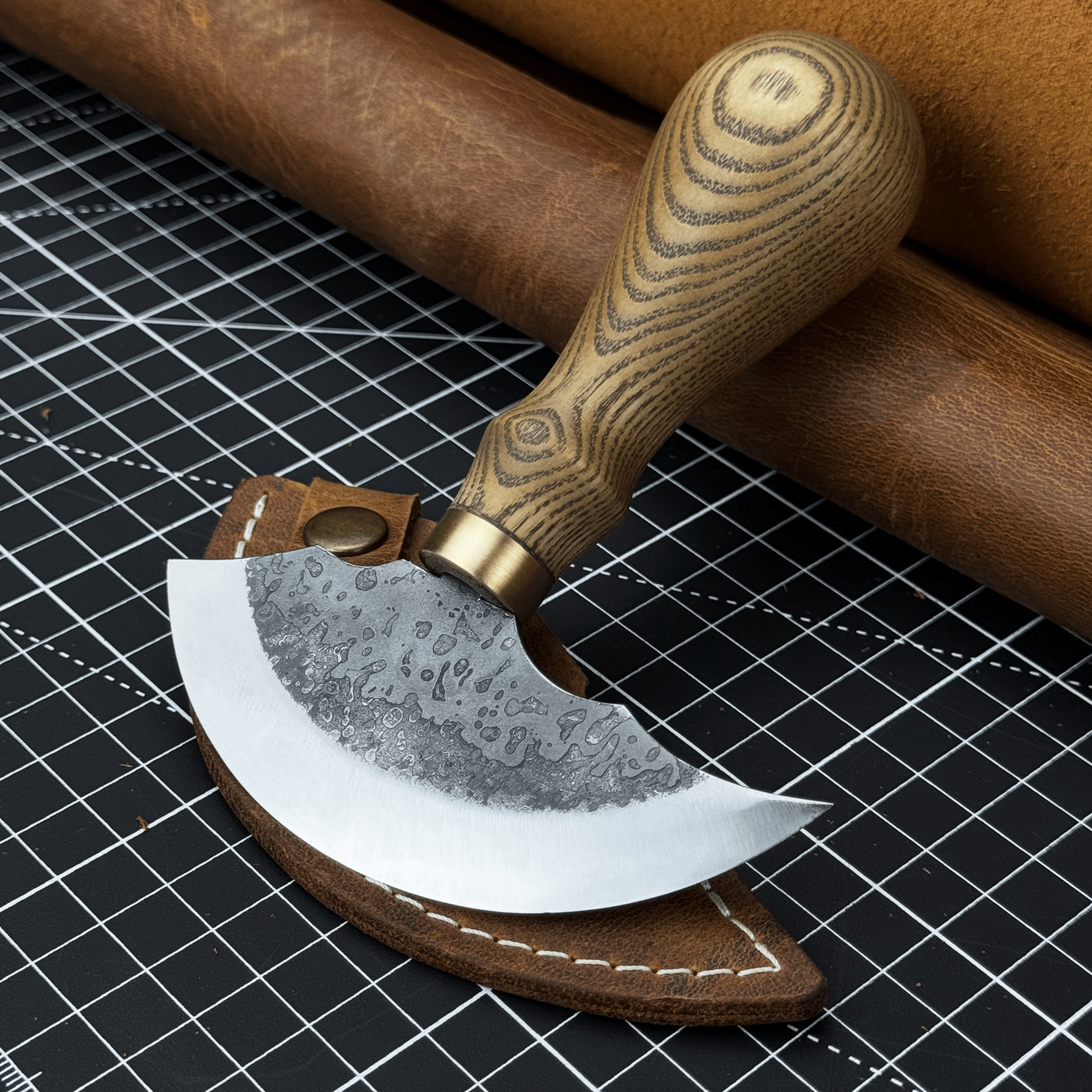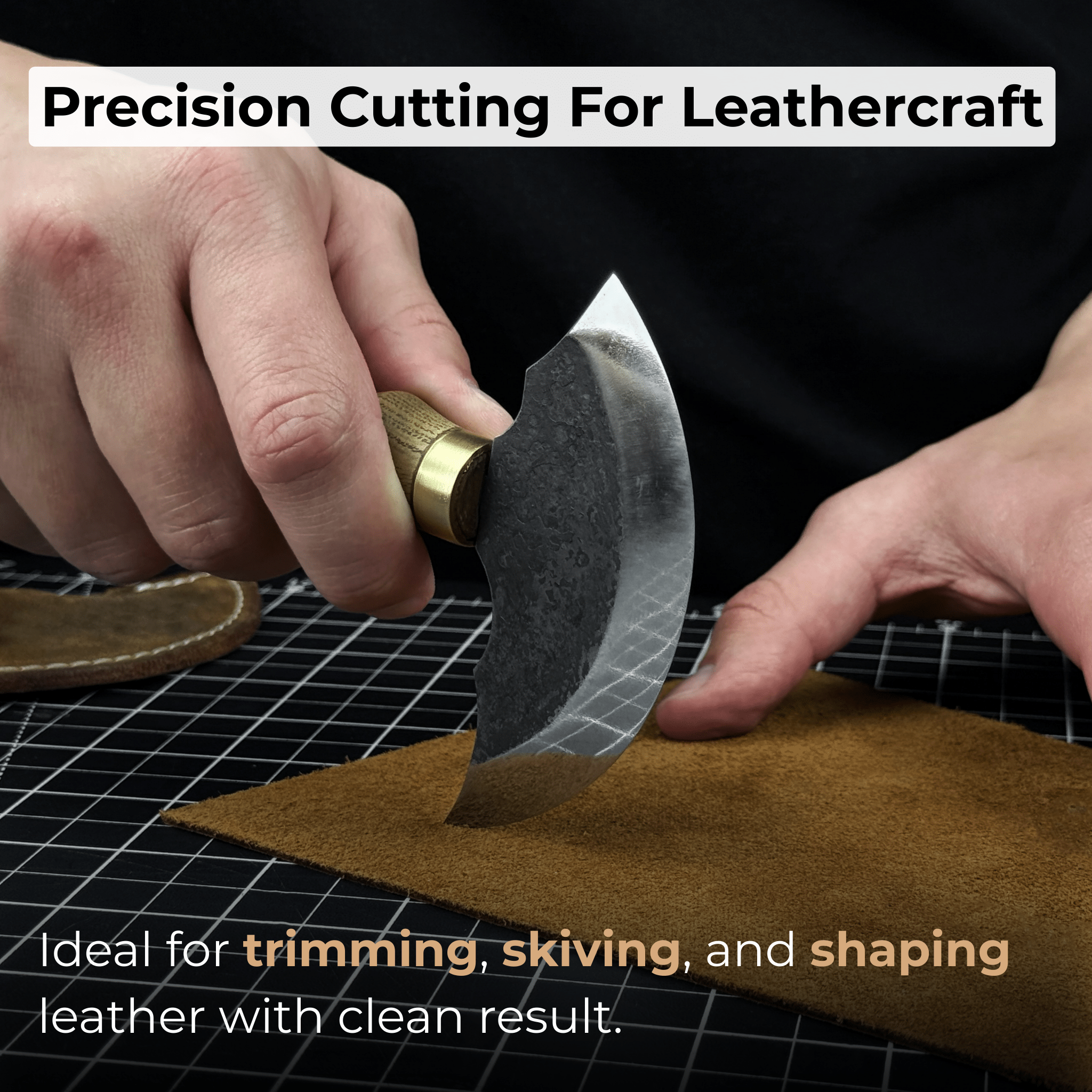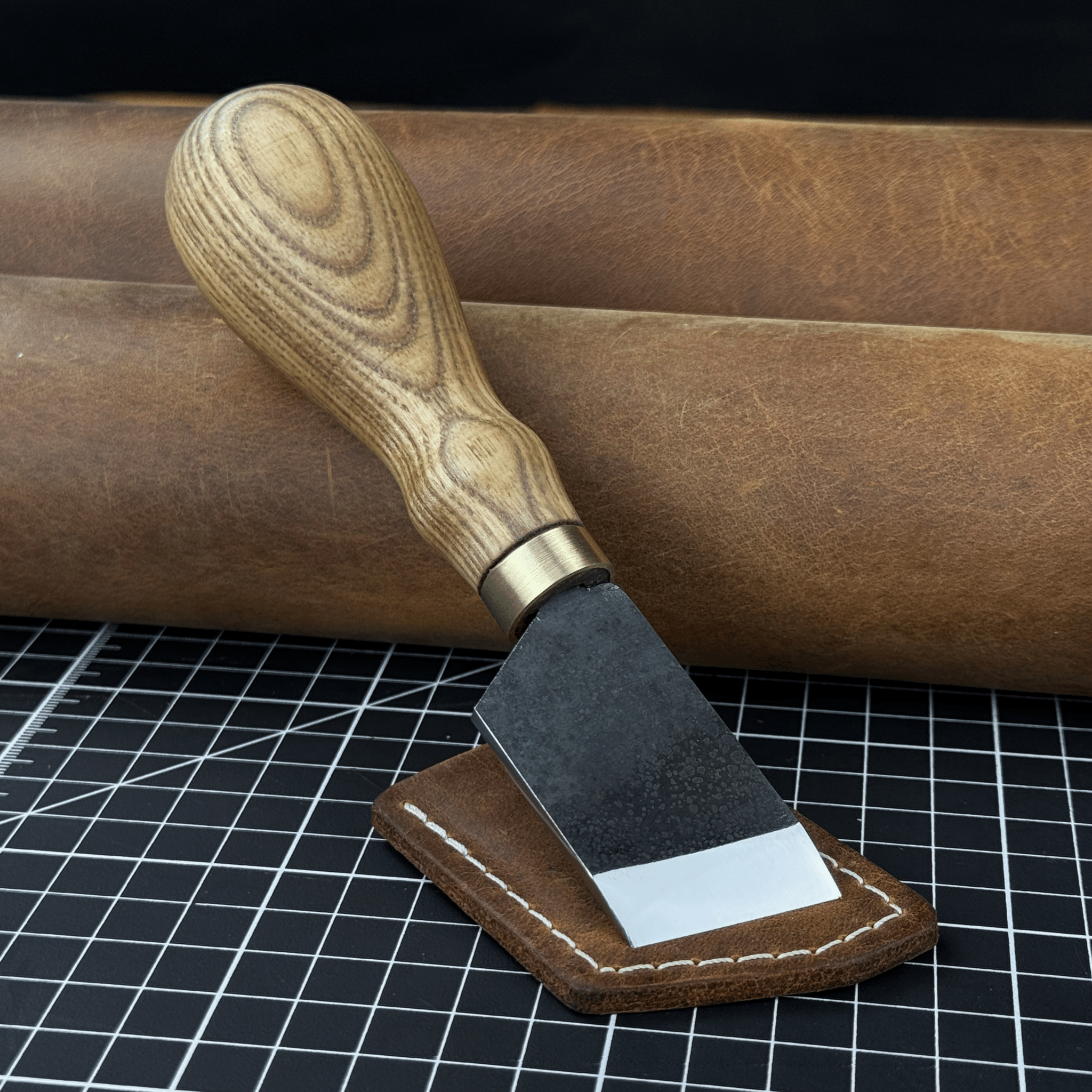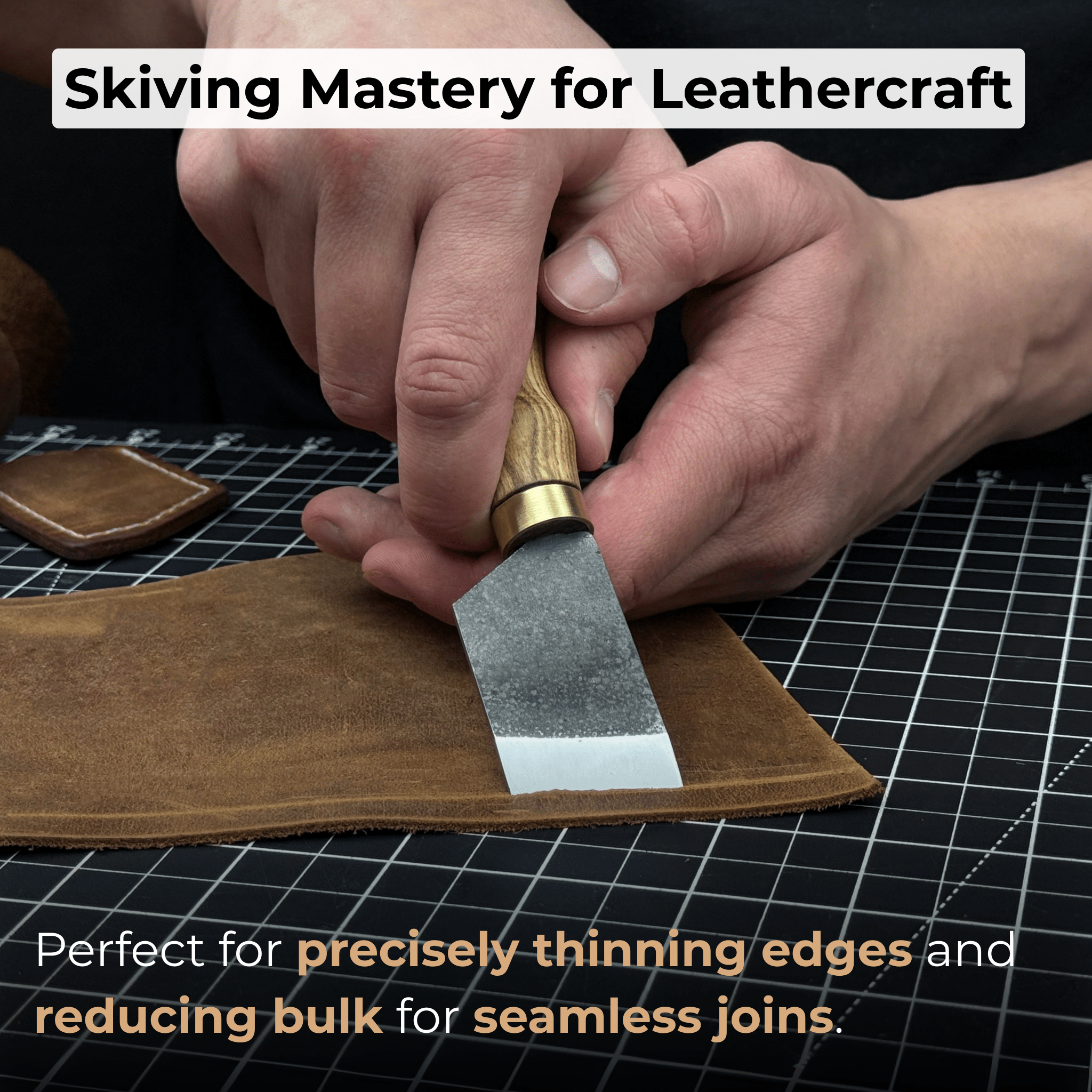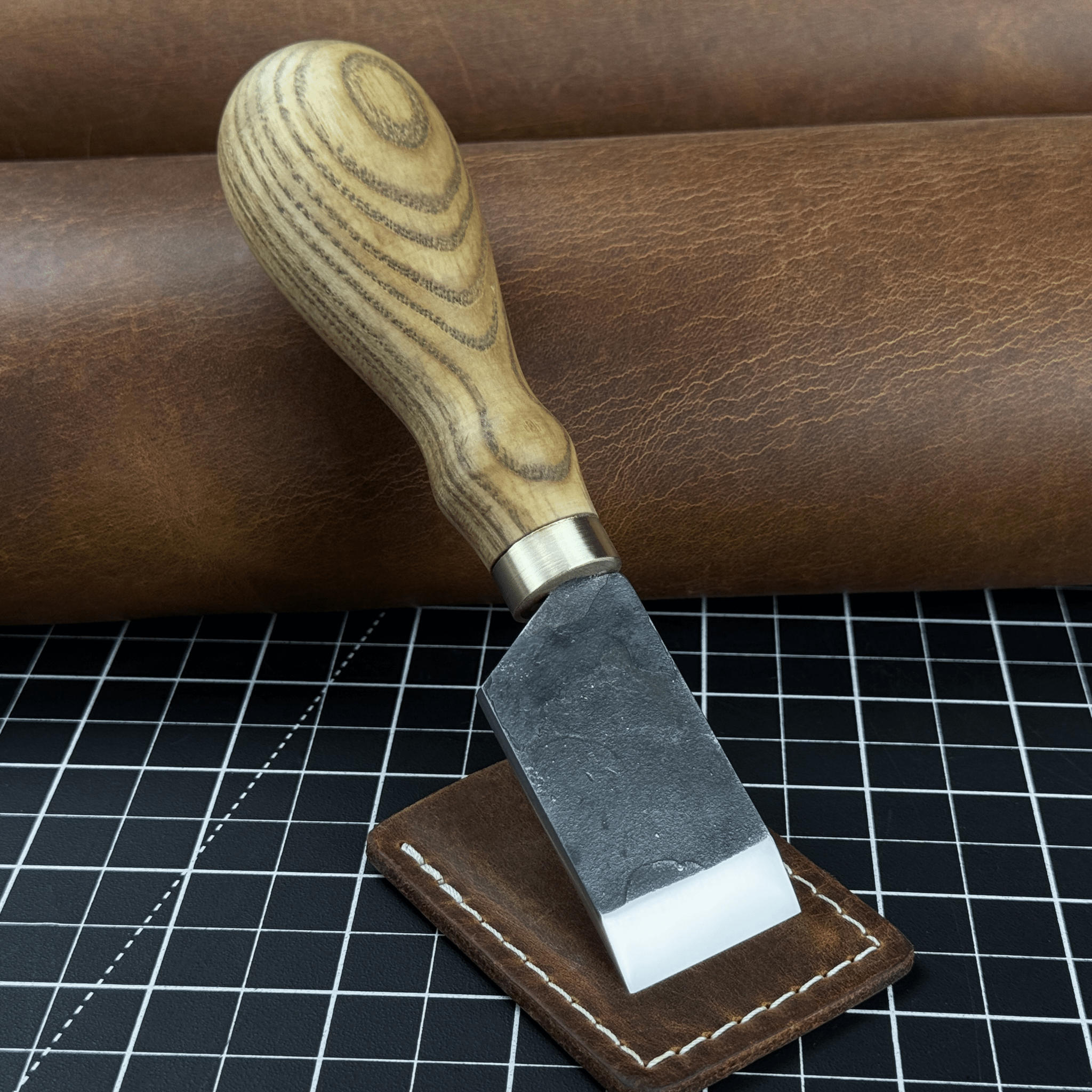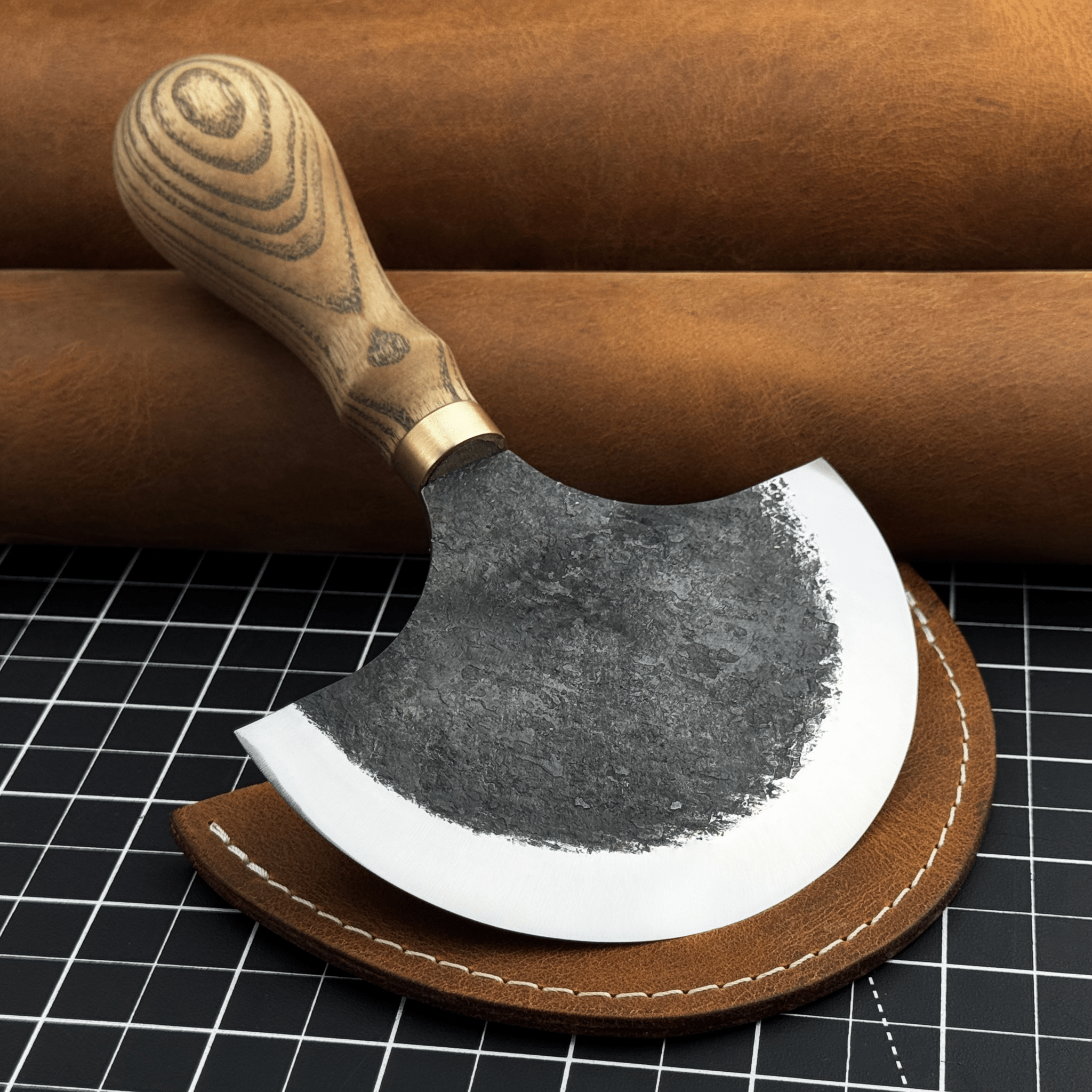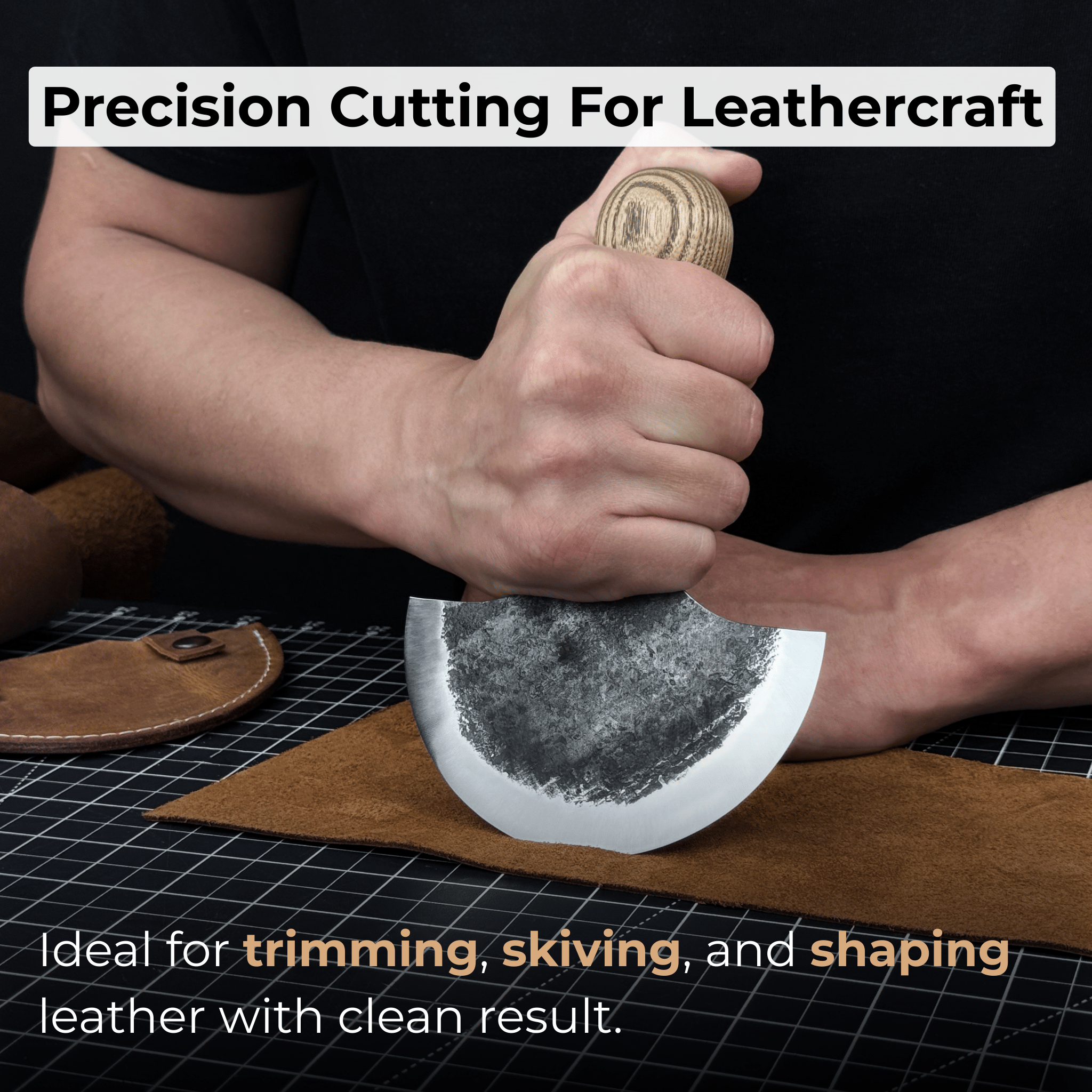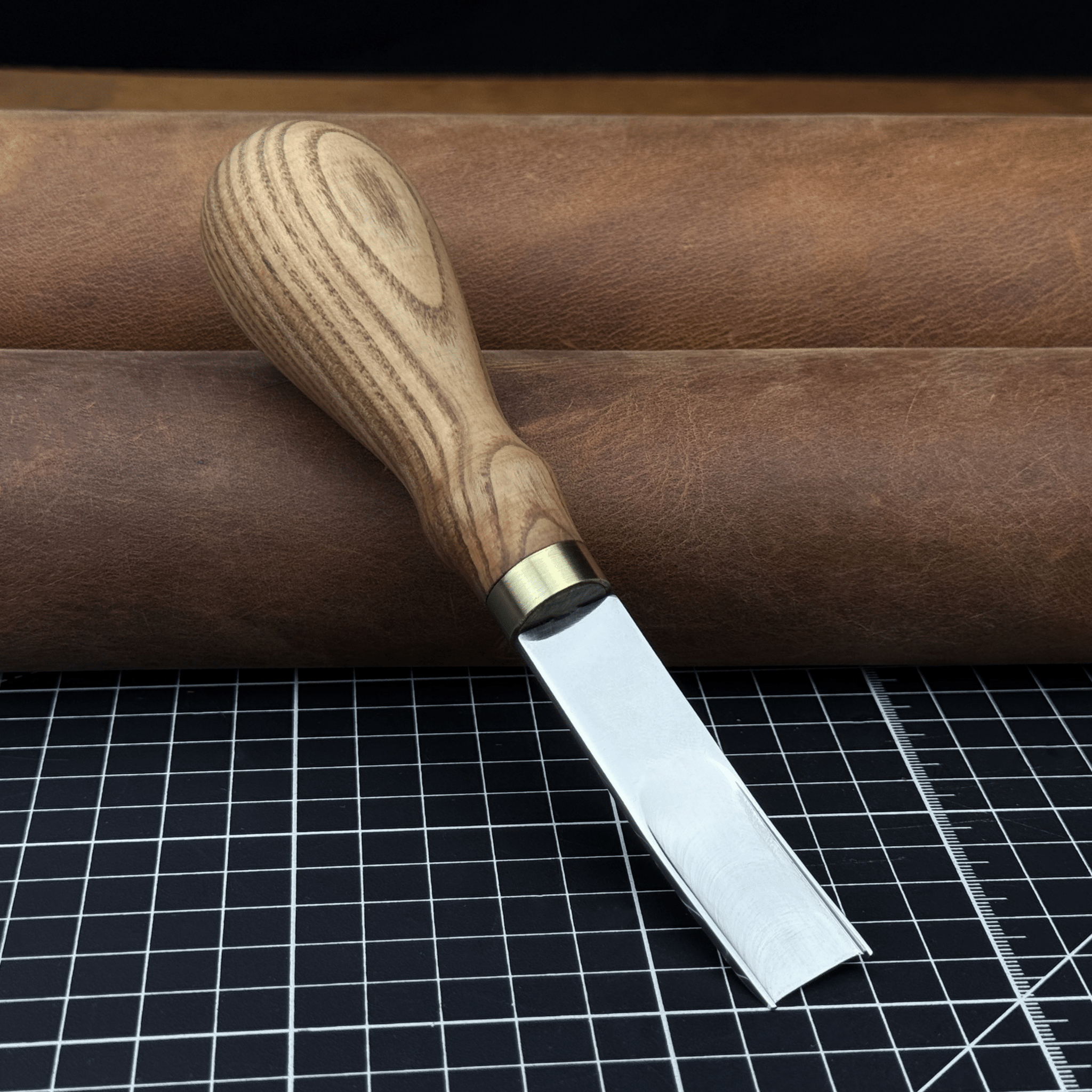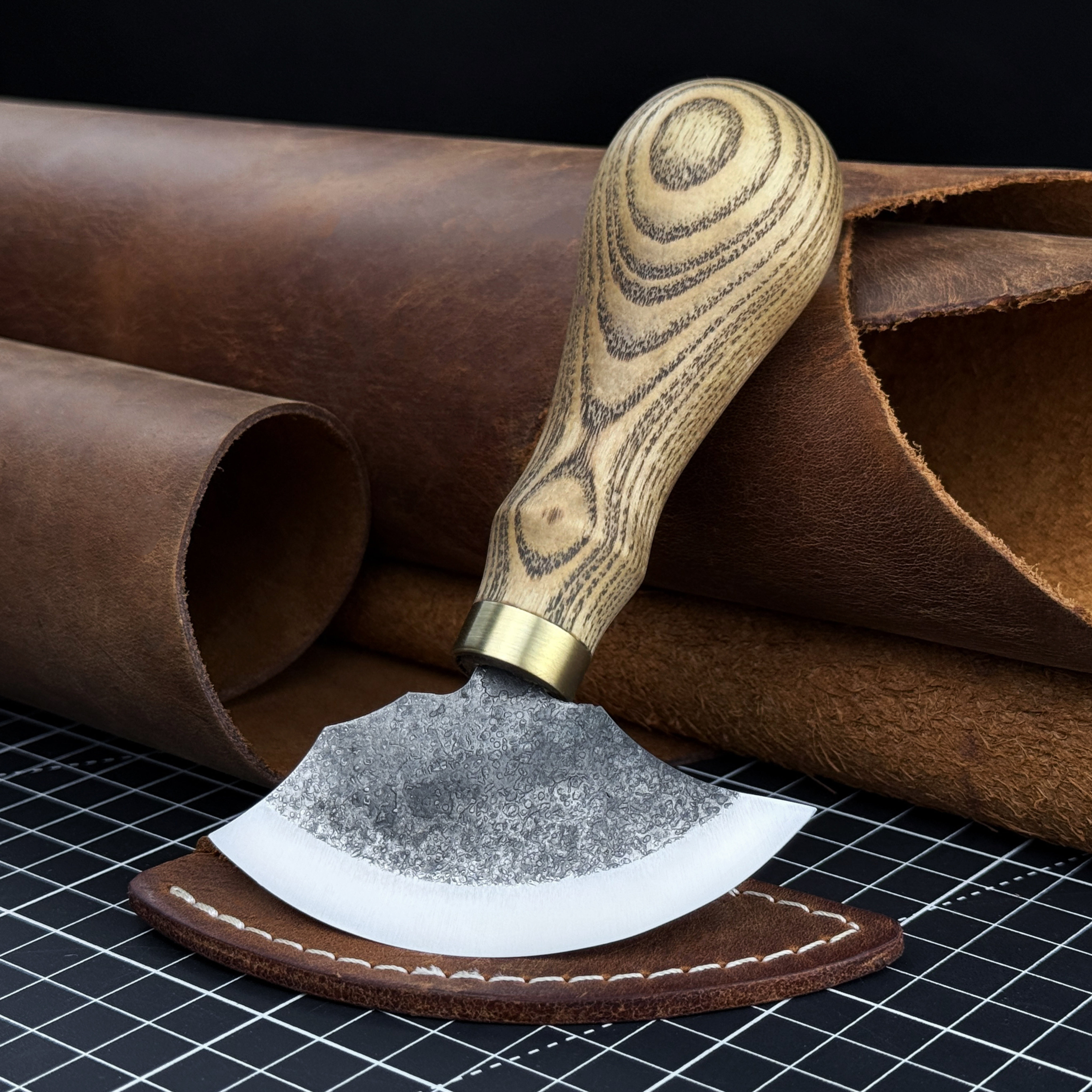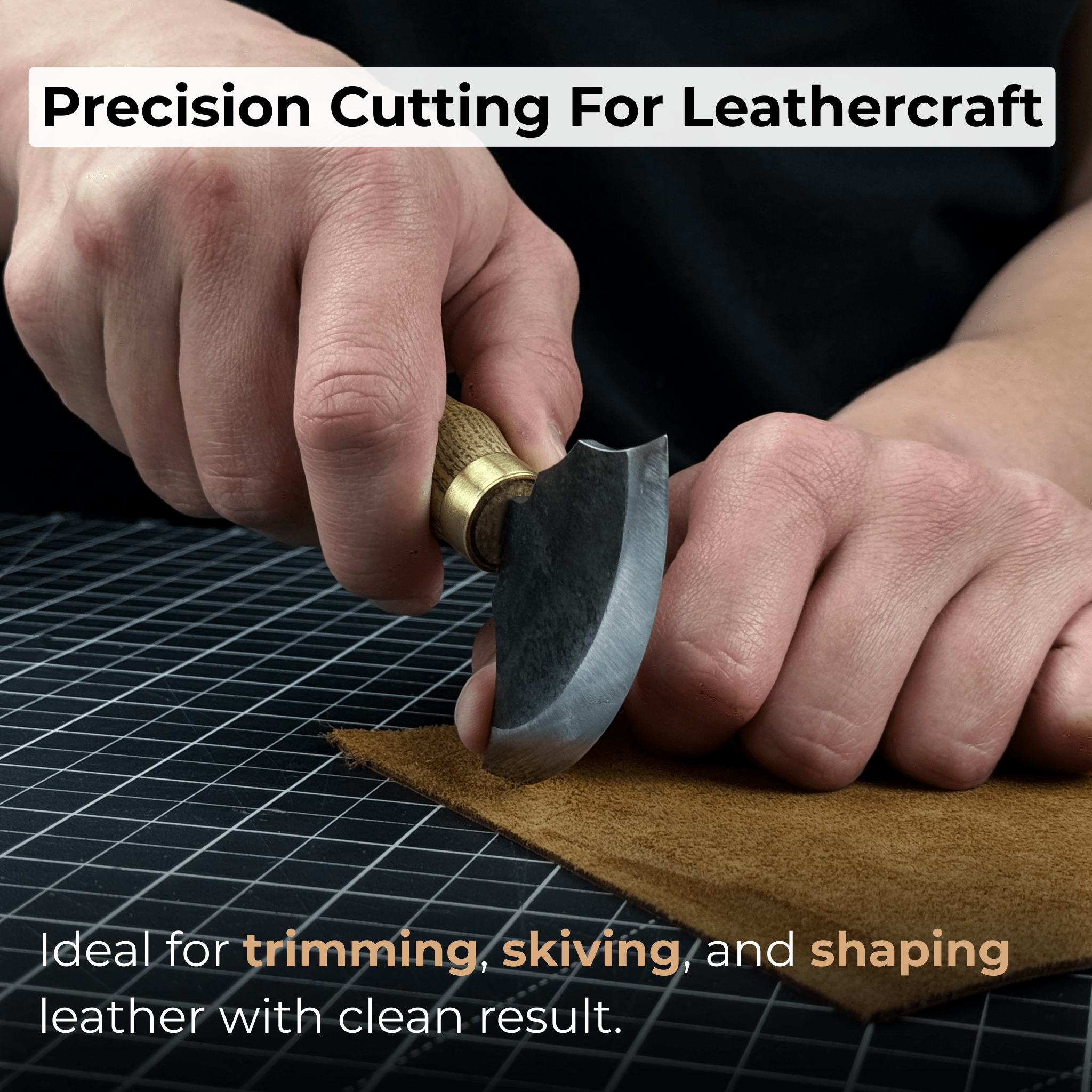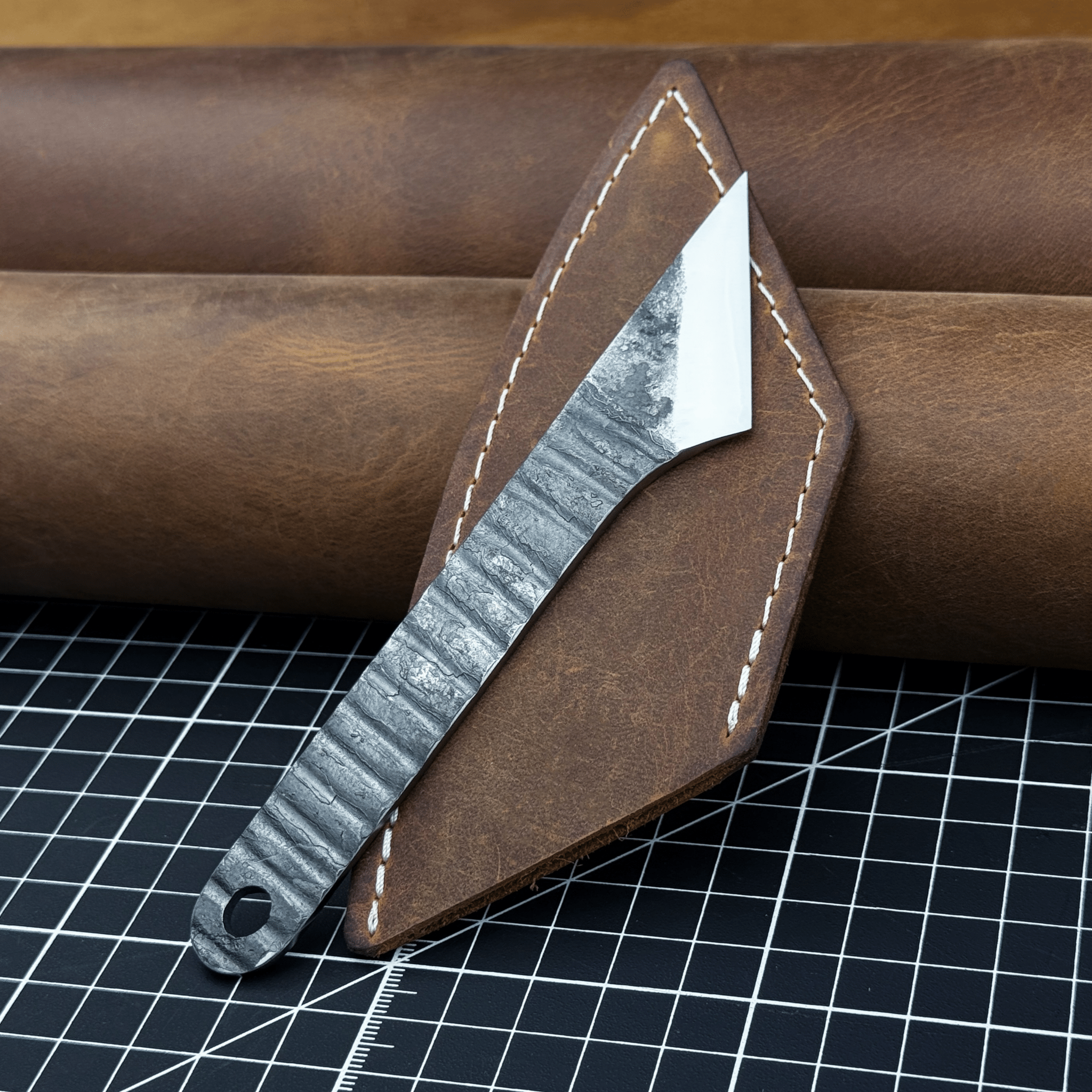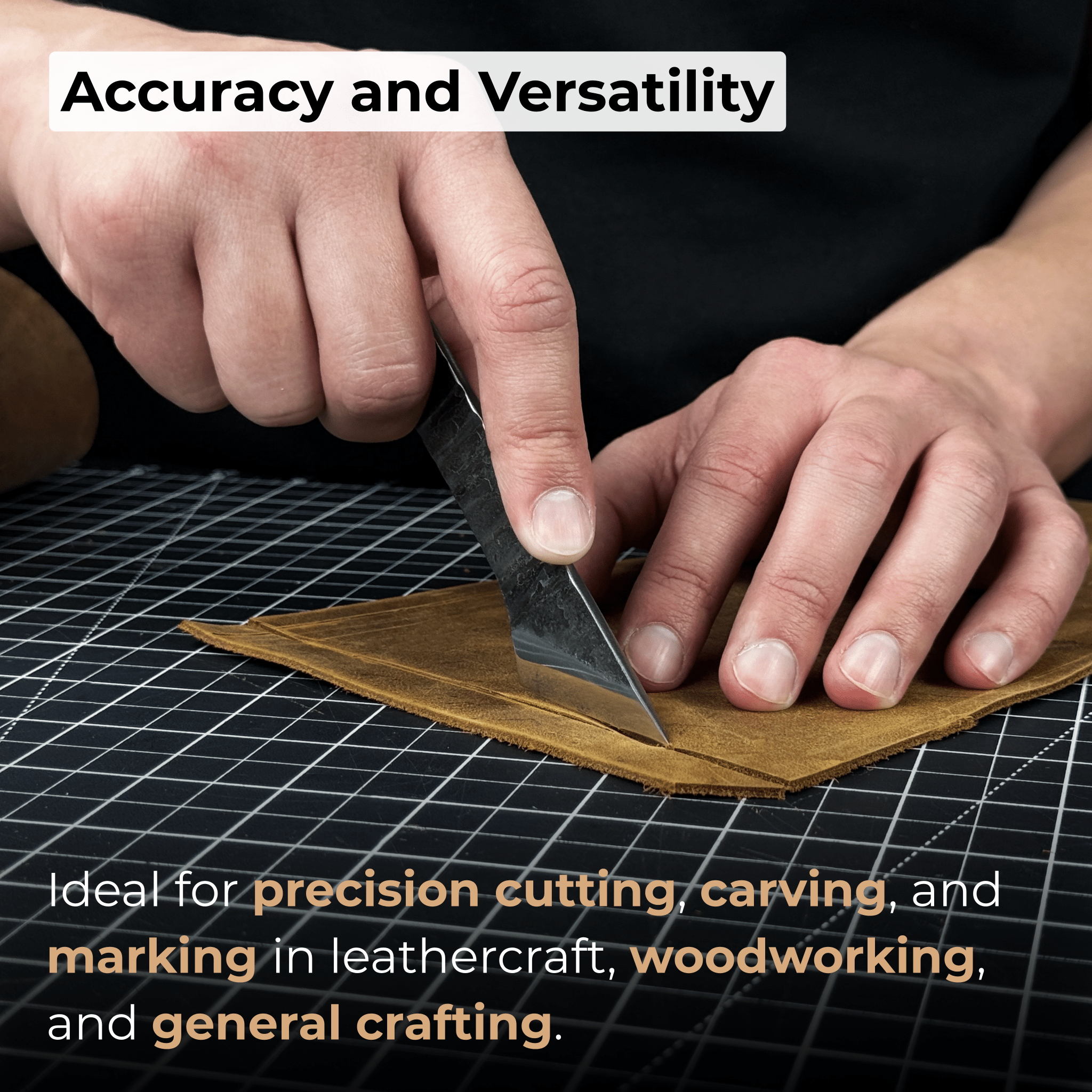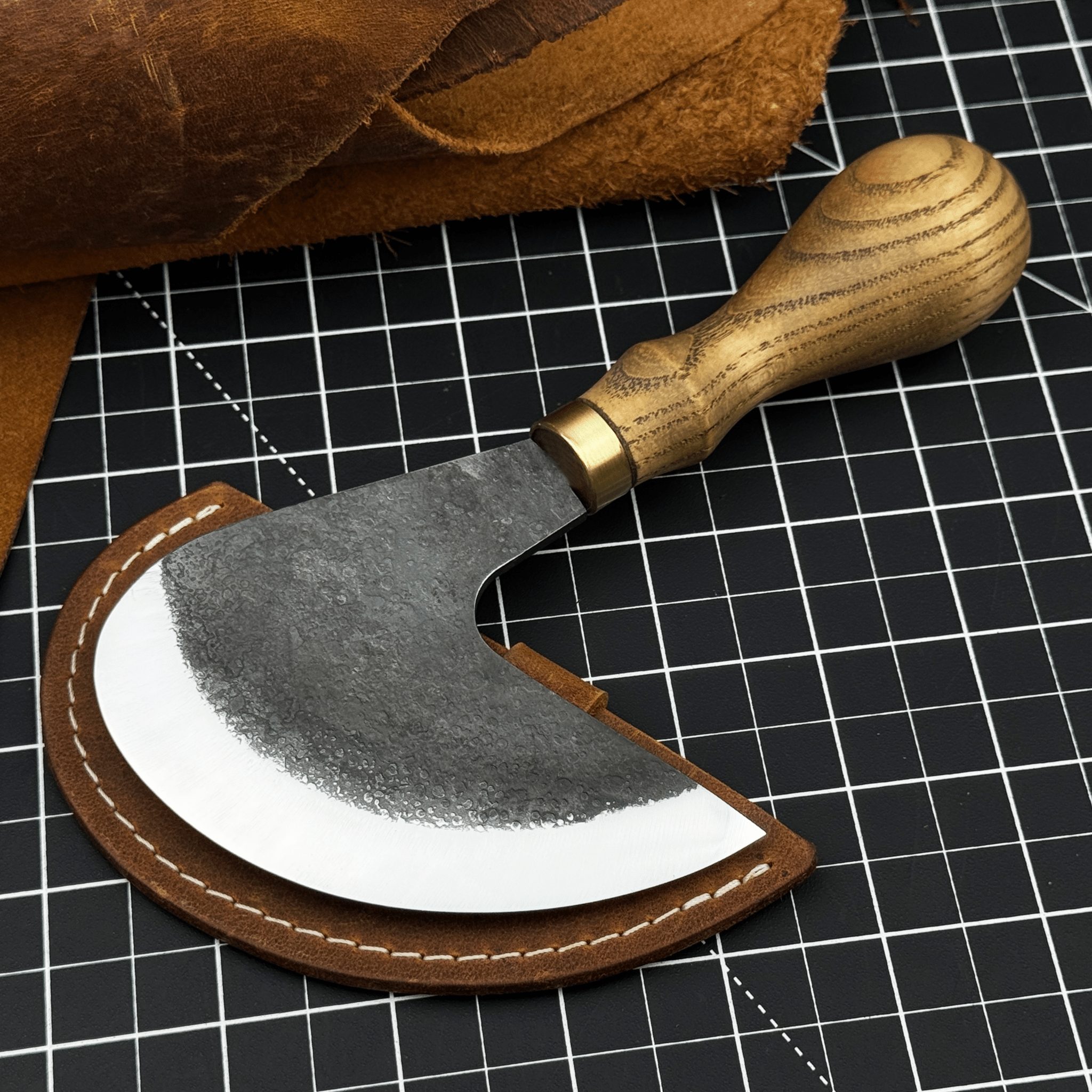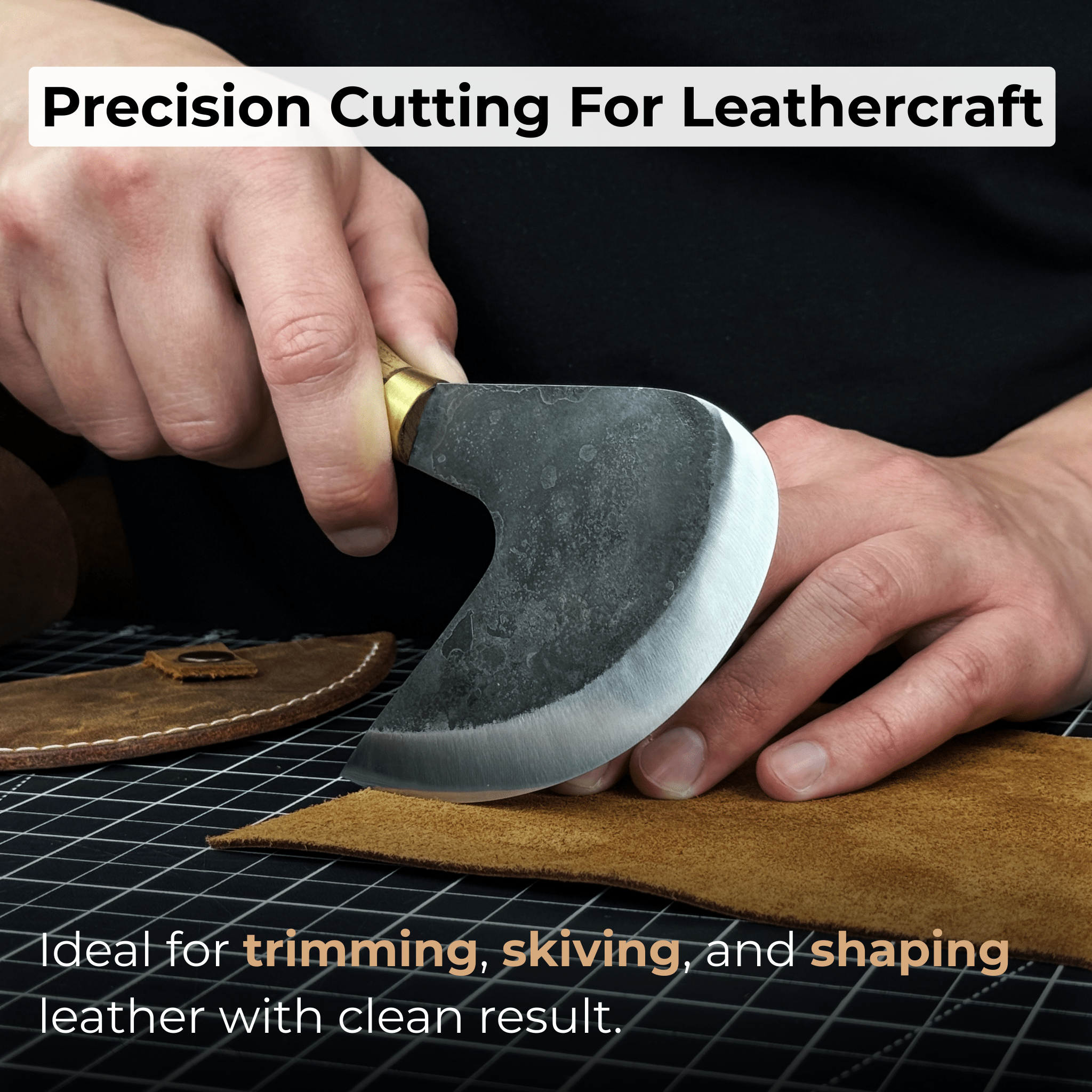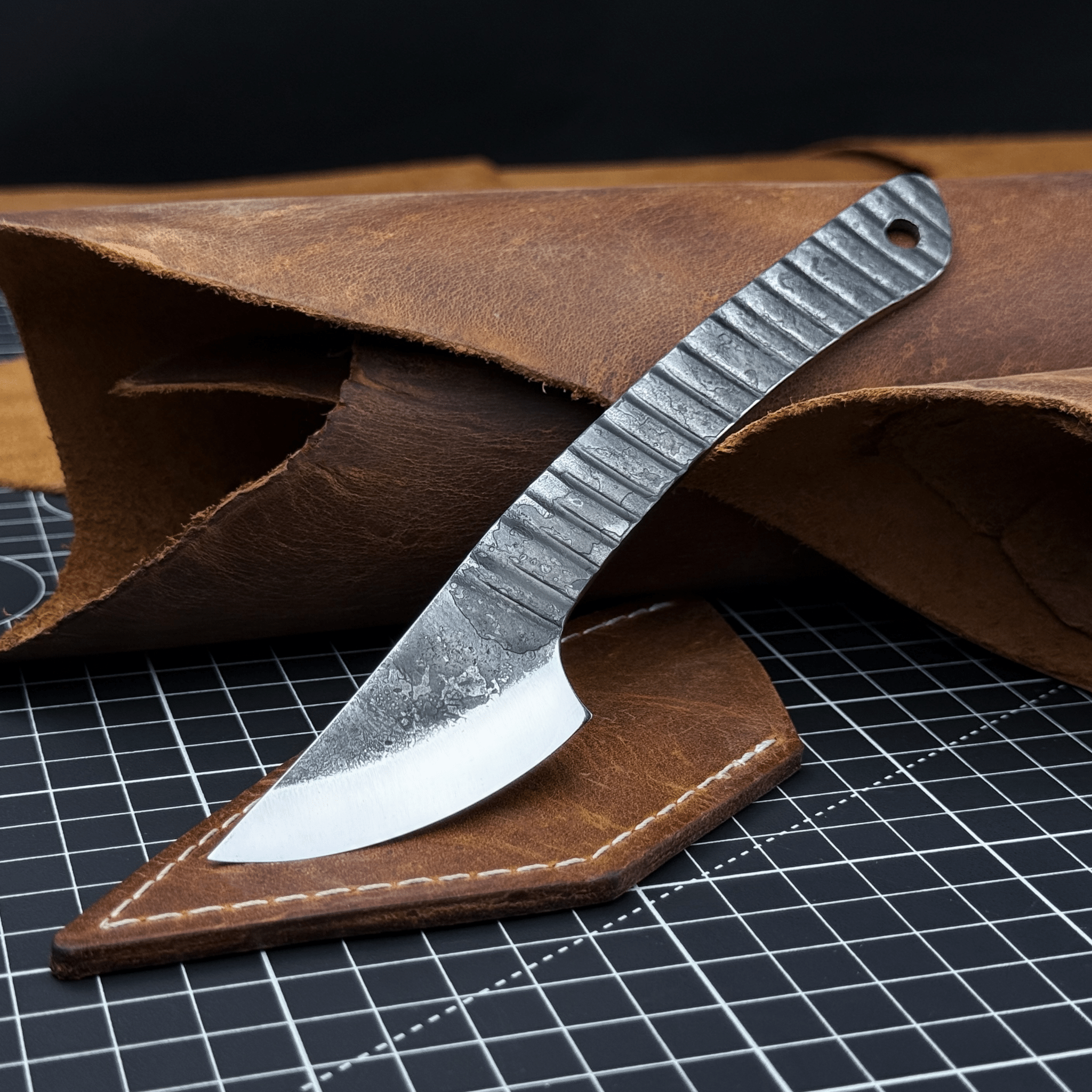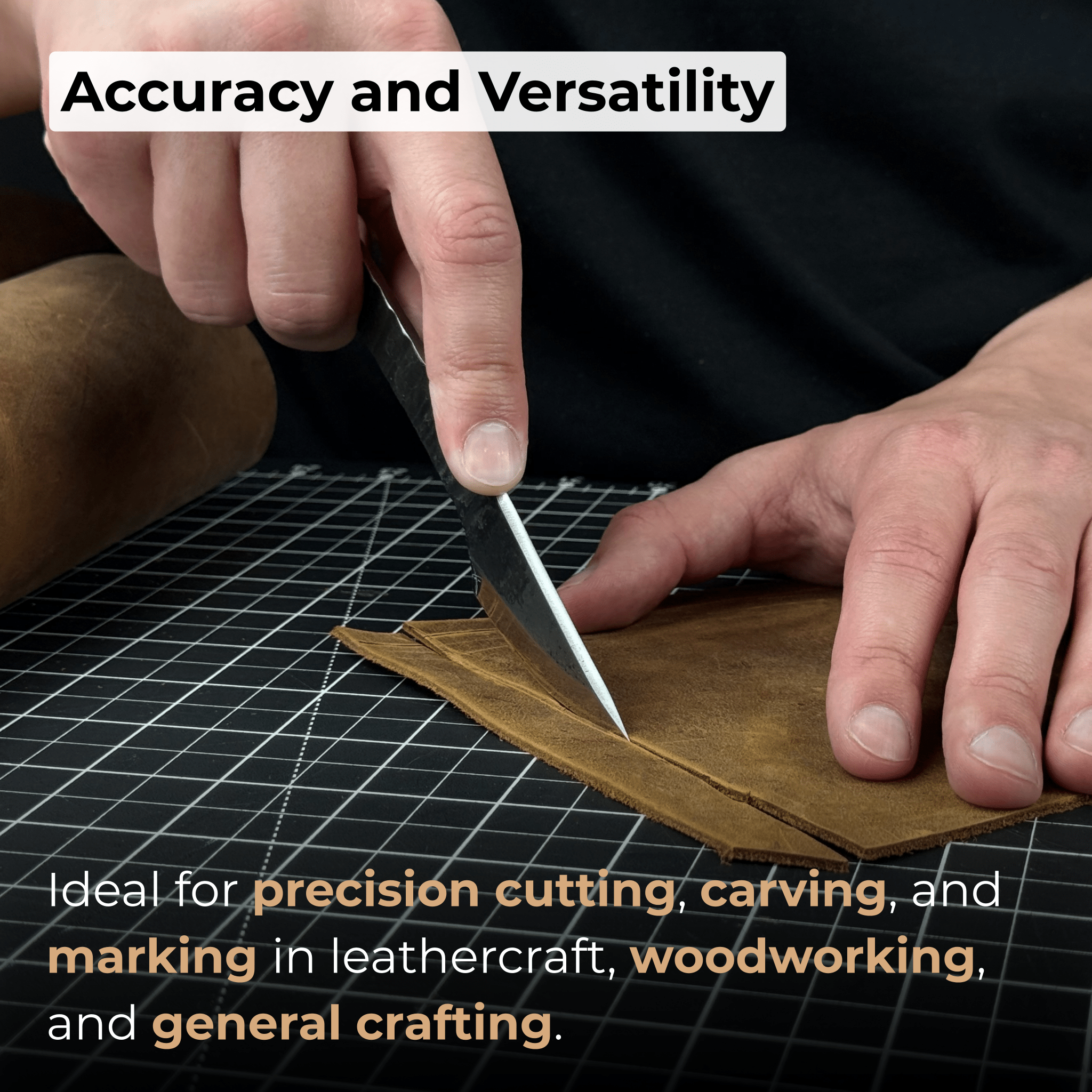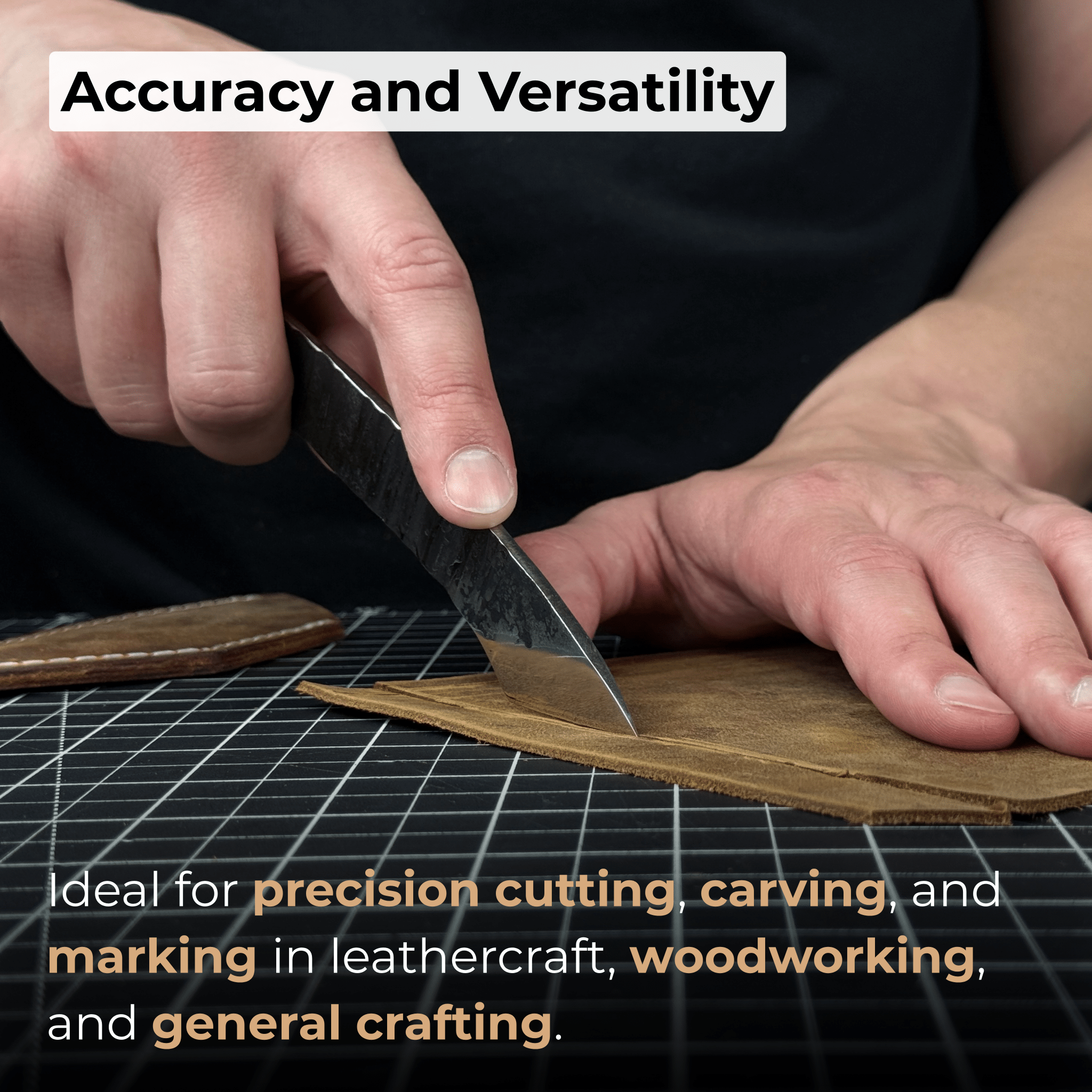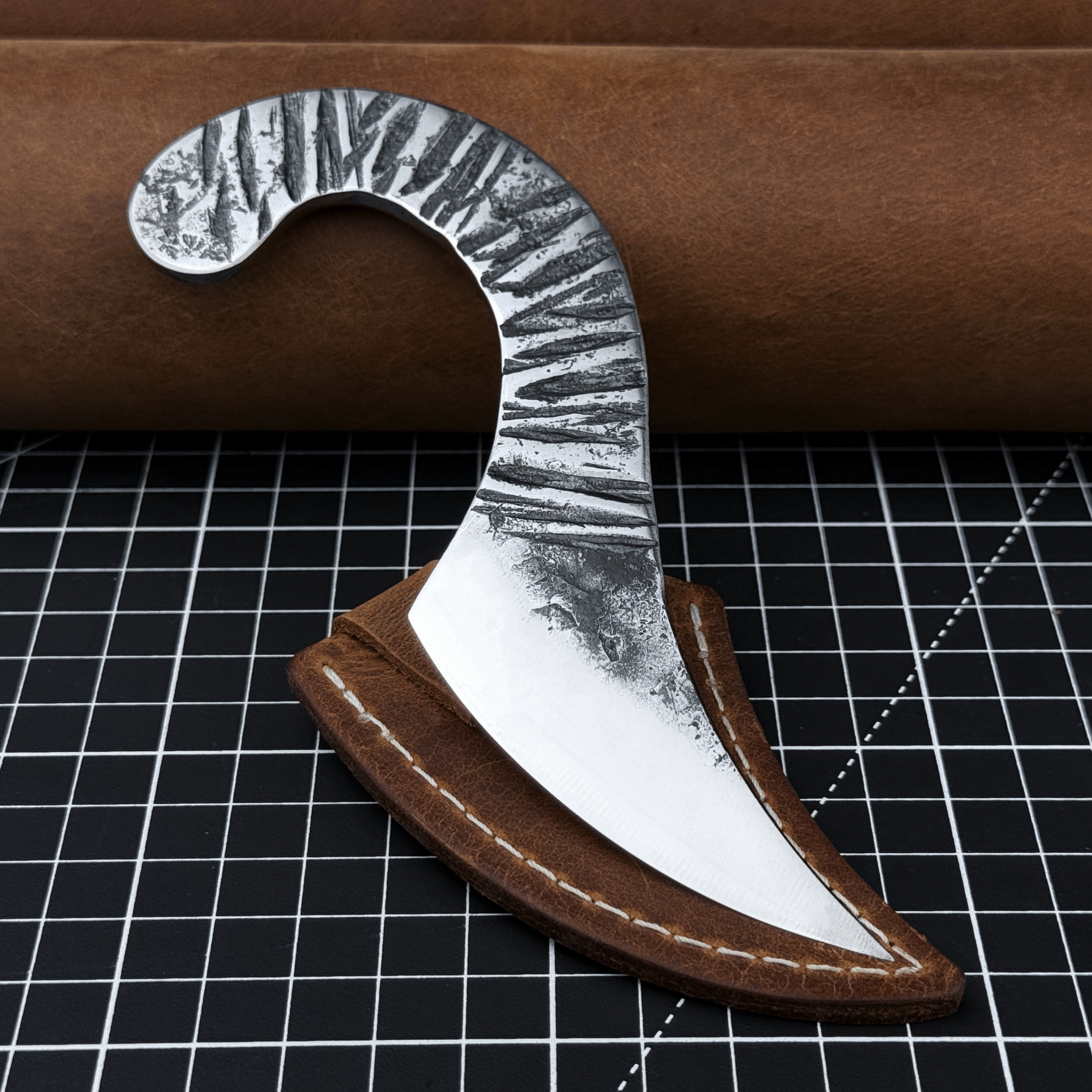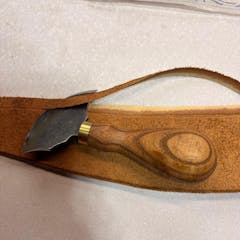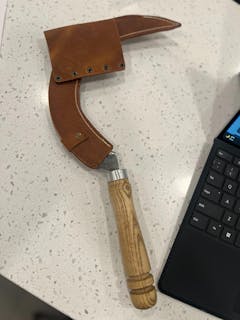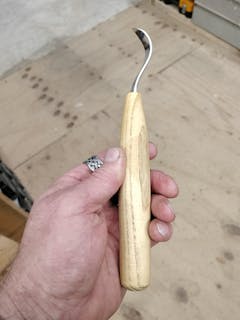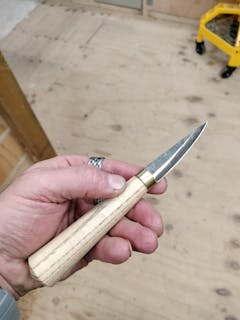Couteau rond en cuir, 10 cm (3,9 pouces)
Couteau à parer le cuir coudé, 3 cm (1,18 pouces)
Couteau à parer le cuir droit, 3 cm (1,18 pouces)
Couteau rond en cuir (demi-lune), 10,5 cm (4,1 pouces)
Petit couteau rond en cuir, 8 cm (3,15 pouces)
Couteau de marquage Kiridashi avec étui en cuir, 4 cm (1,57 pouces)


Fournitures d'affûtage
Gardez vos outils dans un état optimal pendant des années
Couteau de marquage Kiridashi avec lame arrondie, 5,5 cm (2,17 pouces)
Couteau de marquage Kiridashi, 3,5 cm (1,38 pouces)
Couteaux à parer : l'outil indispensable pour maîtriser le travail du cuir
Le parage du cuir est une technique utilisée pour réduire les sections de cuir afin de rendre le matériau plus maniable, et les couteaux à parer sont principalement utilisés à cette fin. Ce processus est essentiel dans la maroquinerie, car il crée des transitions douces, des bords affinés, réduit le volume pour une meilleure couture sans sacrifier la structure et permet d'obtenir un aspect final plus professionnel.
Alors que les couteaux à parer sont des outils électriques créés pour une plus grande efficacité dans le parage de grandes ou de plusieurs pièces de cuir, les outils manuels comme les couteaux à parer sont proposés à un prix nettement inférieur et sont beaucoup plus faciles à manipuler.
Les couteaux à parer le cuir sont également appréciés pour leur haut niveau de contrôle sur la profondeur et l'angle de la coupe. Ils peuvent être appliqués à différents types d'épaisseurs de cuir, permettant un façonnage et un amincissement plus personnalisés par rapport aux couteaux à parer mécaniques. Les couteaux à parer nécessitent une configuration minimale pour commencer et donnent cette sensation artisanale unique que les gens recherchent.
Un couteau à parer typique est doté d'une seule lame biseautée avec une conception à faible angle qui facilite une coupe douce et uniforme, et d'une lame droite ou légèrement incurvée.
Explorons maintenant sa structure plus en détail.
Anatomie d'un couteau à parer : ce qui le distingue
Géométrie des lames : comprendre la forme unique des lames de parage
Chaque couteau à parer le cuir se caractérise par le tranchant élevé de sa lame, qui garantit une coupe nette et précise sans déchirer le cuir. Les types de lames sont très variés et répondent à des tâches spécifiques de travail du cuir.
- Lame droite
Forme : Présente une lame rectangulaire ou légèrement effilée.
Utilisation : Convient pour le rabotage et l'amincissement de grandes surfaces à usage général.
- Lame courbée (lame ronde)
Forme : Ce type d'outil de découpage a un bord incurvé.
Utilisation : Plus adapté à la coupe précise, en particulier dans les zones étroites, permettant une pression uniforme lors du parage.
- Skiver français
Forme : Lame large et plate à pointe ciselée.
Utilisation : Excellent pour parer les bords, en particulier près des coutures ou pour plier les bords.
- Couteau à parer japonais
Forme : Lame longue et droite, dotée d'une pointe très acérée.
Utilisation : Également efficace pour le parage et la découpe grâce à son extrême tranchant.
- Lame à pointe biseautée
Forme : Bord diagonal ou incliné.
Utilisation : Excellent pour le biseautage à angle incliné, utilisé pour éclaircir progressivement des zones de matériau spécifiques.
- Lame à parer oblongue
Forme : Un couteau à parer le cuir de ce type présente une lame ovale allongée avec un tranchant plat ou arrondi.
Utilisation : Permet un dégrossissage plus précis sur des surfaces plus grandes et crée des transitions plus douces.
- Lame pointue
Forme : pointue ou en V.
Utilisation : Convient aux travaux détaillés dans de petites zones, telles que les coins ou les motifs complexes.
Conception de la poignée : confort et contrôle dans le travail du cuir
Les poignées ergonomiques s'adaptent naturellement à la main, ce qui est particulièrement important pour les tâches très exigeantes en main-d'œuvre qui nécessitent du temps et des efforts.
Une poignée confortable permet de manipuler facilement un couteau à parer le cuir, d'absorber les chocs et de réduire la fatigue de la main. Les textures de la poignée varient selon les fabricants et dépendent des matériaux du manche. Les manches les plus résistants à l'usure sont fabriqués à partir de bois et de matériaux composites.
Les manches de couteaux à parer en cuir sont disponibles en différentes longueurs et épaisseurs, ce qui a également un impact sur le confort de prise en main. Si le manche d'un couteau à parer est trop court ou trop fin, il devient difficile de le saisir fermement.
La plupart des couteaux à parer sont dotés de manches fixes intégrés dans la conception du couteau. Cependant, certains fabricants proposent des couteaux à parer modulaires avec des manches remplaçables, ce qui permet une certaine personnalisation.
Les formes de poignée courantes incluent :
- Manches droits : Manches linéaires offrant une prise en main simple, souvent utilisés dans les couteaux à parer à usage général.
- Manches incurvés : s'adaptent à la courbe naturelle de la main, offrant une meilleure ergonomie. Parfois, les couteaux en cuir spécialisés sont dotés de rainures pour les doigts ou de surfaces texturées.
- Manches plats : permettent une prise en main à faible angle, généralement utilisés dans les couteaux d'office et les couteaux à découper pour un contrôle précis.
- Manches ronds : offrent une meilleure maniabilité, souvent utilisés dans les couteaux à découper japonais, fabriqués en bois ou en matériaux composites.
L'importance de l'équilibre : comment il affecte la précision de vos coupes
Dans l'artisanat comme le travail du cuir, l'objectif final est d'obtenir une apparence élégante et précise.
Un outil de parage bien équilibré vous rapproche de cet objectif. Lorsque le poids du couteau de parage est réparti uniformément entre la lame et le manche, les maroquiniers peuvent effectuer des coupes du cuir plus contrôlées, essentielles pour une épaisseur de parage uniforme.
Un bon équilibre permet également de maintenir une main stable pendant de longues périodes, améliorant ainsi la qualité globale du travail du cuir et contribuant à la sécurité en réduisant le risque de glissades accidentelles.
Choisir le bon couteau à parer pour vos projets de maroquinerie
Matériaux des lames : exploration des différentes options d'acier pour le parage
La lame à parer joue un rôle crucial pour obtenir l'épaisseur parfaite des bords, des plis et des coutures. Comprendre les avantages et les inconvénients des différents matériaux de lames en acier disponibles pour les couteaux à parer est essentiel pour sélectionner l'outil adapté à vos besoins en maroquinerie.
- Acier au carbone
Avantages : Les outils de travail du cuir avec des lames en acier au carbone sont faciles à entretenir, extrêmement durables, ils peuvent résister à une utilisation rigoureuse et sont à un prix raisonnable.
Inconvénients : Vulnérable à la rouille, nécessite un entretien régulier du couteau à parer, comme un graissage, pour éviter la corrosion.
- Acier à outils D2
Avantages : Excellente résistance à l'usure et à l'abrasion, maintient bien le tranchant.
Inconvénients : En raison de sa dureté élevée, il peut être plus difficile à affûter, plus cher que l'acier 1095.
- Acier inoxydable (440C, VG-10 et plus)
Avantages : Résistant à la rouille, nécessite un entretien moins fréquent par rapport aux lames en acier au carbone.
Inconvénients : ne conserve pas son tranchant aussi longtemps que l'acier au carbone, peut être plus cher selon l'alliage.
- Acier inoxydable à haute teneur en carbone
Avantages : Offre un tranchant, une bonne rétention des bords et une résistance à la corrosion, adapté à une utilisation intensive.
Inconvénients : son prix est plus élevé que celui des aciers inoxydables ou au carbone standard.
Lames fixes ou remplaçables : avantages et inconvénients
Certains maroquiniers chevronnés expliquent qu'un couteau à découper le cuir avec des lames remplaçables peut être un meilleur choix pour les débutants, car ils sont largement disponibles, abordables et simples à utiliser. Ce couteau en cuir offre une polyvalence et des changements de lame rapides, ce qui facilite l'entretien de l'outil. Certaines lames remplaçables peuvent même être réaffûtées pour une utilisation prolongée.
Les couteaux à parer le cuir à lame fixe nécessitent plus d'entretien mais peuvent durer toute une vie s'ils sont correctement entretenus. Ces couteaux sont généralement plus durables et adaptés aux travaux du cuir plus lourds ou plus avancés.
Pesons le pour et le contre :
Lames de couteau à parer en cuir fixes
Avantages : Plus robuste, supporte une utilisation intensive sans risque de casse ou de détachement, offre stabilité et contrôle, plus facile à nettoyer car il n'y a pas de pièces mobiles.
Inconvénients : Nécessite un affûtage régulier, moins portable, peut être plus cher.
Lames de couteau à parer en cuir remplaçables
Avantages : Lames facilement interchangeables, polyvalentes avec différents types de lames, conception plus compacte.
Inconvénients : Pas aussi durable que les lames fixes, coûts de remplacement des lames permanents, moins stable et contrôlable, affectant la précision.
Facteurs à prendre en compte : épaisseur du cuir, type de projet et préférence personnelle
Les projets de maroquinerie robustes, comme les ceintures, les sacoches et les chaussures, nécessitent un cuir plus épais pour éviter de compromettre la résistance.
Pour les objets plus fins, comme les portefeuilles ou les couvertures de livres, un cuir plus fin est un meilleur choix.
Tenez compte de ces facteurs en fonction du niveau de compétence :
- Pour les artisans débutants
Types de cuir : Le cuir tanné végétal est plus facile à travailler, car il a tendance à bien réagir au façonnage et à la teinture. Le cuir tanné au chrome est abordable et idéal pour s'entraîner.
Épaisseurs du cuir : 2 à 3 oz pour les objets artisanaux raffinés comme les porte-clés et les portefeuilles ; 4 à 5 oz pour les projets plus importants comme les ceintures et les sacs simples.
- Pour les maroquiniers avancés
Types de cuir : Le cuir pleine fleur offre une qualité et une durabilité élevées pour l'artisanat haut de gamme.
Épaisseurs du cuir : 6 à 7 oz pour les articles en cuir robustes comme les sangles, les ceintures et les sacs résistants ; 8 à 9 oz pour les articles très résistants comme les étuis et les ceintures épaisses.
Histoires de l'atelier : Couteaux à parer en action
La pratique de diverses techniques de découpage est essentielle pour maîtriser l'art et faire passer vos projets de fonctionnels à des projets finement finis. Voici quelques techniques efficaces à essayer :
- Parage des bords biseautés : un couteau à parer plat pour le cuir est couramment utilisé pour biseauter les bords, réduisant ainsi le volume de manière progressive. Cette technique de parage garantit des bords nets et fins et facilite la couture.
- Rabotage uniforme avec une bordure française : la bordure française est utilisée pour raboter uniformément de grandes surfaces, utile pour affiner l'intérieur des poches ou des surfaces plus grandes où une épaisseur constante est requise.
- Parage en couches : Le parage en couches est appliqué à la conception d'articles tels que des portefeuilles, où les couches extérieures et intérieures restent épaisses tandis que les couches intérieures sont écrémées pour réduire le volume, gardant le produit final élégant tout en préservant l'intégrité des bords.
- Marquage des bords avec des pieds à coulisse : les pieds à coulisse sont très utiles pour marquer le dos du cuir afin de réaliser un parage propre et précis.
Technique avancée - Parage en diagonale : la lame est placée à mi-chemin d'une coupe et un couteau à parer le cuir parcourt en diagonale, enlevant plus de matière et en gardant le contrôle du processus.
